Birds Don’t Know About Social Distancing
By Britta Shoot
Cheep cheep cheep!
The sparrows and finches are here. I don’t know what time it is—I still haven’t opened my eyes, let alone turned off my white noise machine or opened the shades—but I know the regulars have arrived because they are chirping noisily right outside.
As I shuffle into the kitchen to make coffee, I squint out the window to see dainty House Finches, puffy Mourning Doves, and agile sparrows foraging peaceably together.
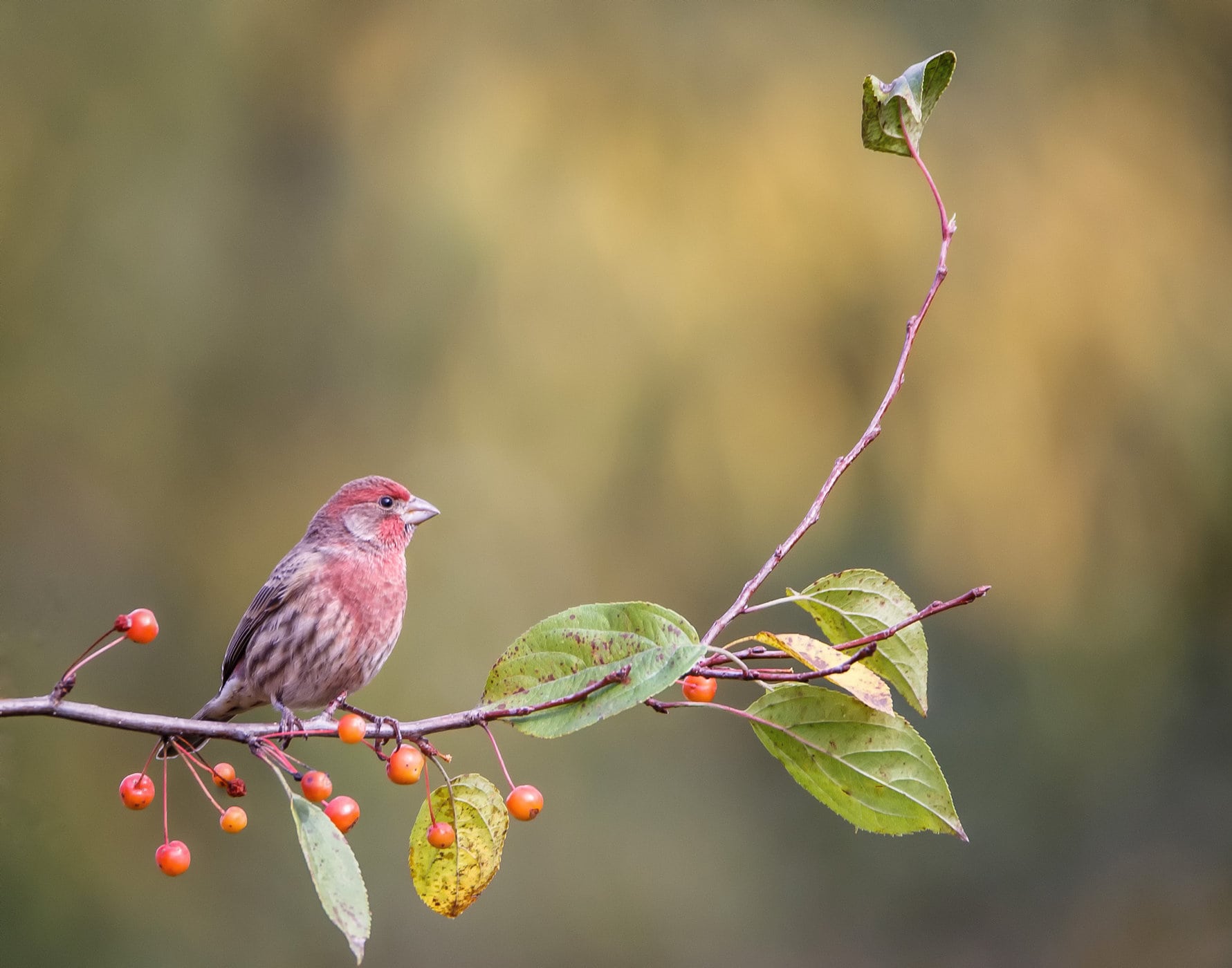
I live in a downtown San Francisco apartment building, where these types of charming encounters are constant. There’s a little yard along the walkway up to the building, and in addition, I’m absurdly fortunate to have a small roof deck right outside my flat. It’s just big enough for a few chairs and a container garden of varied succulents and cacti, perennials including snapdragons and lilies, and woody geraniums I inherited from former neighbors.
No doubt due to the abundance of plant life and stately street trees in the immediate vicinity, most days, energetic robins and lively hummingbirds visit my porch on their rounds. Every afternoon, a few members of the local Red-masked Parakeet colony fly shrieking past—if they don’t land directly on my fire escape or roof, of course. Between so much bird activity and expansive views into numerous downtown office, apartment, and hotel buildings, I feel intensely connected to the city and its rhythms, even when I’m in my home, physically removed from it all.
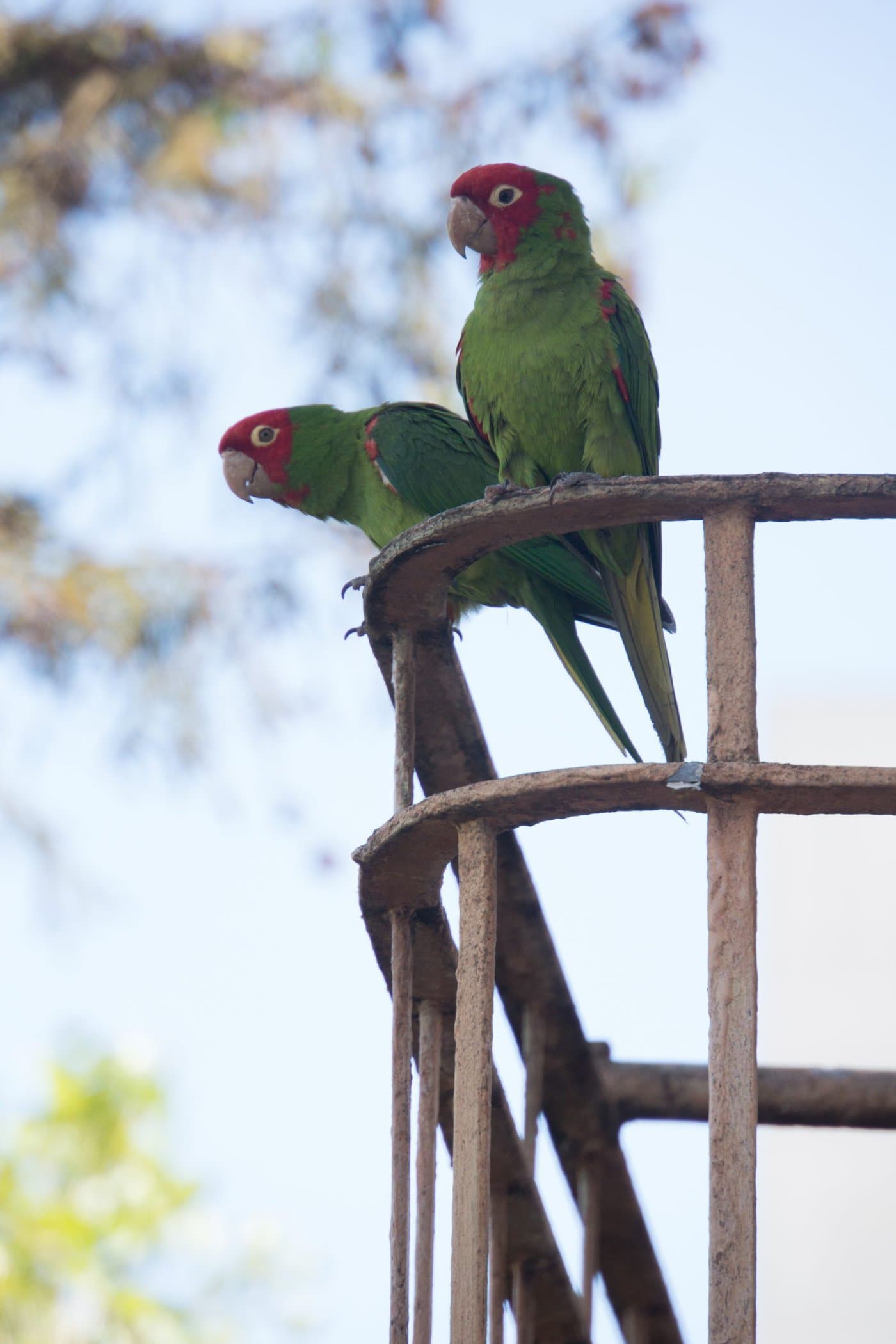
In How to Do Nothing: Resisting the Attention Economy, Jenny Odell notes that when she visits Oakland’s Rose Garden, she isn’t “alone in nature,” even when she is the only person around.
“When the garden is empty of people,” she writes, “I still consider it a social place where I spend time with jays, ravens, Dark-eyed Juncos, hawks, turkeys, dragonflies, and butterflies, not to mention the oaks, the redwoods, the buckeyes, and the roses themselves.”
Because I live in a densely populated area, I never expect to be fully alone, even when tourists aren’t waving at me from a nearby hotel window or perching birds aren’t right outside the window next my desk. Without even moving from my office chair, I can watch hawk pairs catch updrafts over the Financial District. Some magic of acoustics and my specific location means I often hear them first, a signal to peer out my east-facing windows, or a midday excuse to rush onto the deck to look for them soaring over SoMa (and stretch a little before I sit back down).
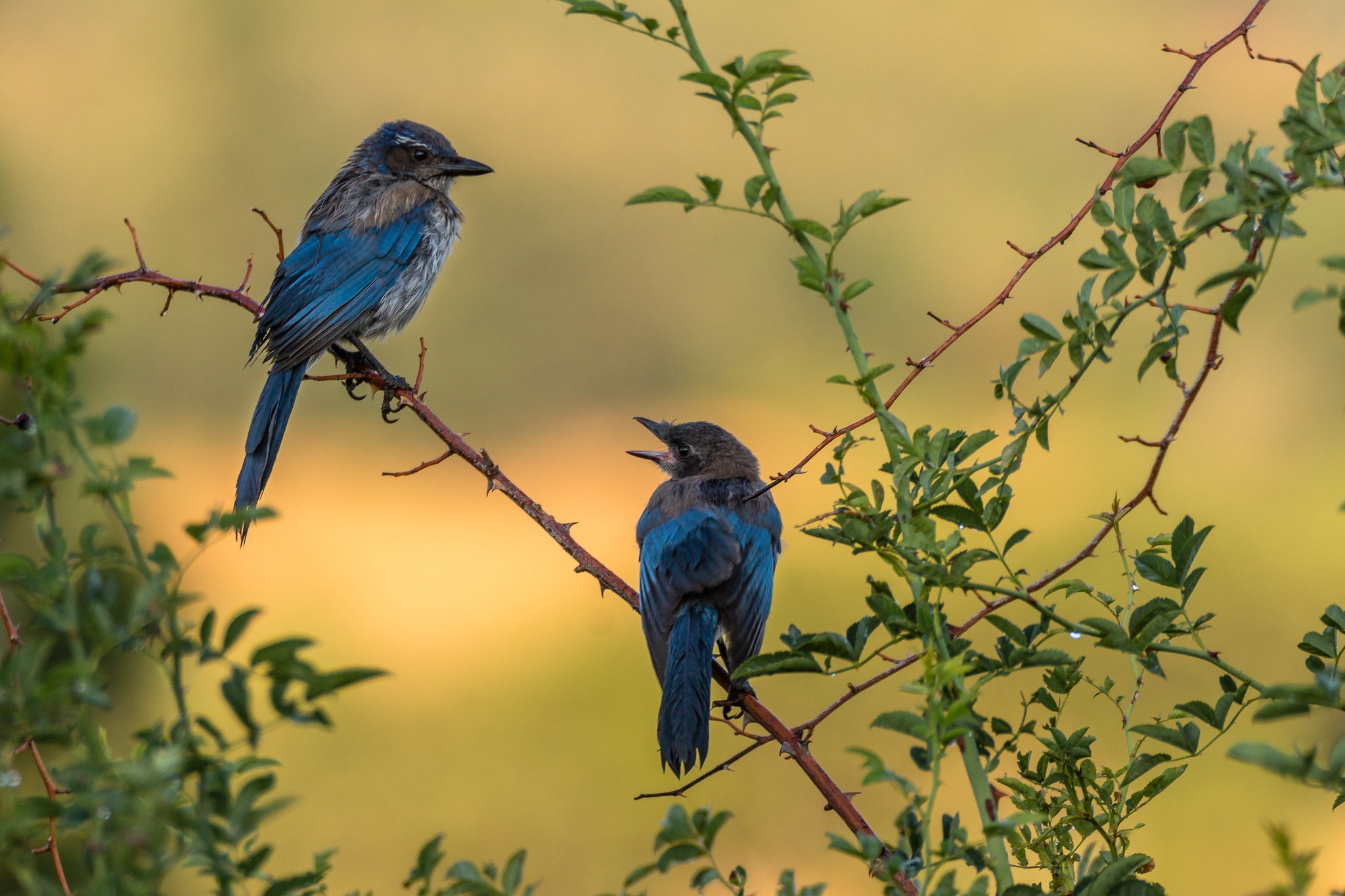
Now, because of shelter-in-place orders, I hear every bird before I see it. With almost no downtown auto traffic, no cable car cables humming under the street, no drivers chatting in the cabstand or bellhops tooting their doormen’s whistles, there is mostly profound silence. One single sparrow singing a few feet away sounds incredibly loud.
That may be the nurtured counterpart of the bird’s natural state. I have read that urban birds are noisier because they have to be, in order to be heard over the collective din of the urban soundscape. Do the birds realize it’s quieter now? Will they adapt—and would they bother anyway, if they knew this is all somewhat temporary?
My own adaptations feel relatively minor so far. My spouse has been working from home since the first week of March, joining me in the living room that now doubles as our shared home office. I write words; he writes code. We’re both privileged that we can work almost anywhere. And as introverts who have lived together in small apartments for more than a dozen years, we’re pretty well adapted to spending long stretches of quiet time together in snug quarters. While any emergency at the scale of the COVID-19 pandemic obviously causes a fair bit of anxiety, sheltering-in-place has offered us joyful opportunities to glance up from our computers and spot even more birds than we normally enjoy observing together.
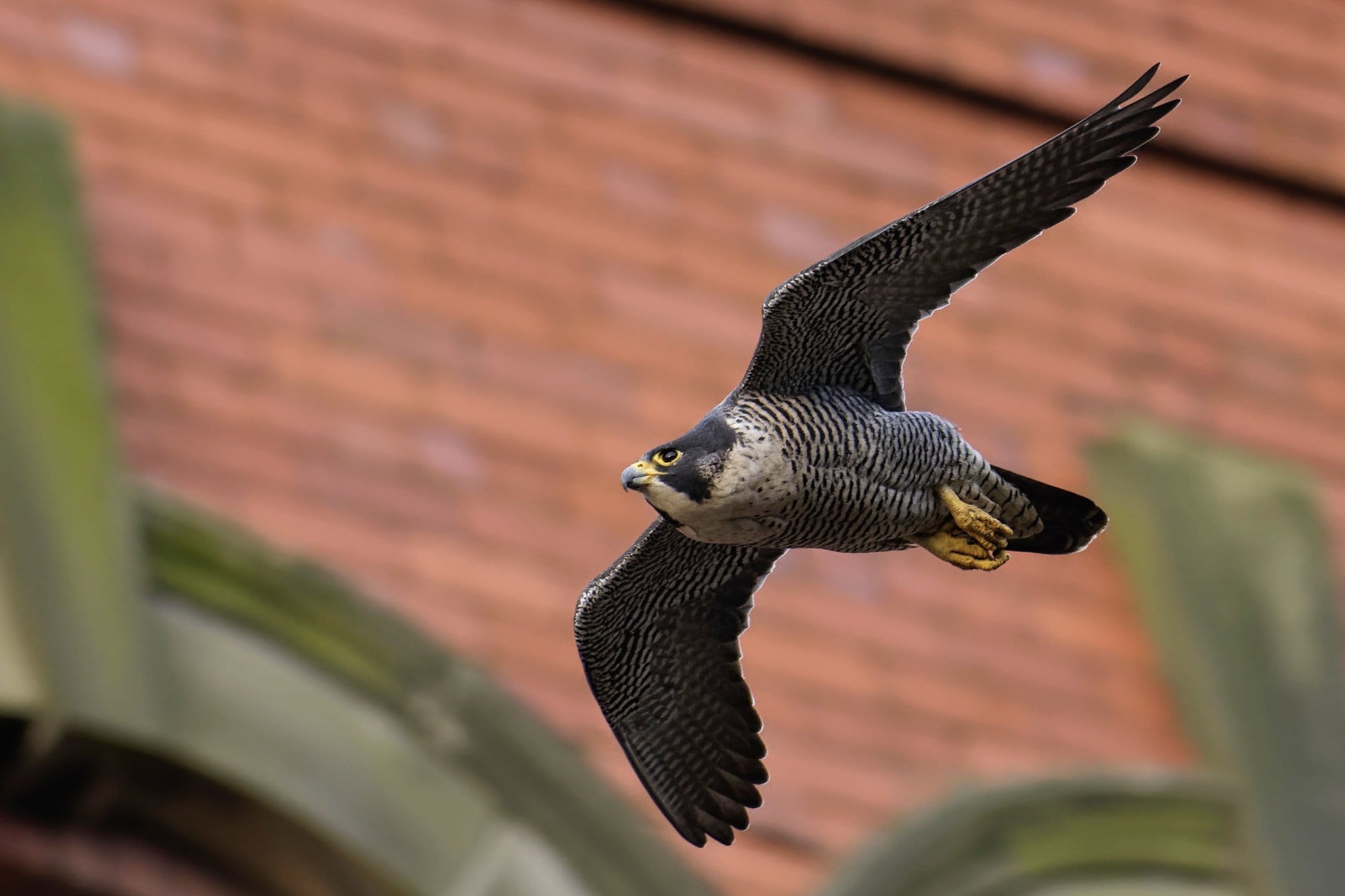
Because our area attracts so many passerines, sometimes we get a drop-in visit from one of the downtown birds of prey that nest on various skyscrapers and storefront signs. Whenever the Mourning Doves suddenly scatter from our roof, I leap up on alert for Peregrine Falcons and Red-tailed Hawks. Now, because we’re both working from home, we both hop up and scan the area for raptors together.
In the decade I’ve lived here—in San Francisco but also this specific apartment—I’ve often thought of Northern California as pleasantly season-less; the microclimate fog patterns shift in the summer, and it does get too hot for me in August. What ends up marking the changes in time are dramatic events such as wildfires or much-needed but extreme downpours.
But I’ve started rethinking this (possibly cynical) outlook because I’m noticing that even when my neighbors seem to veer little from their daily routines—and until recently, business at the hotel across the street from my building was steady year round—my avian visitors change as the months pass.
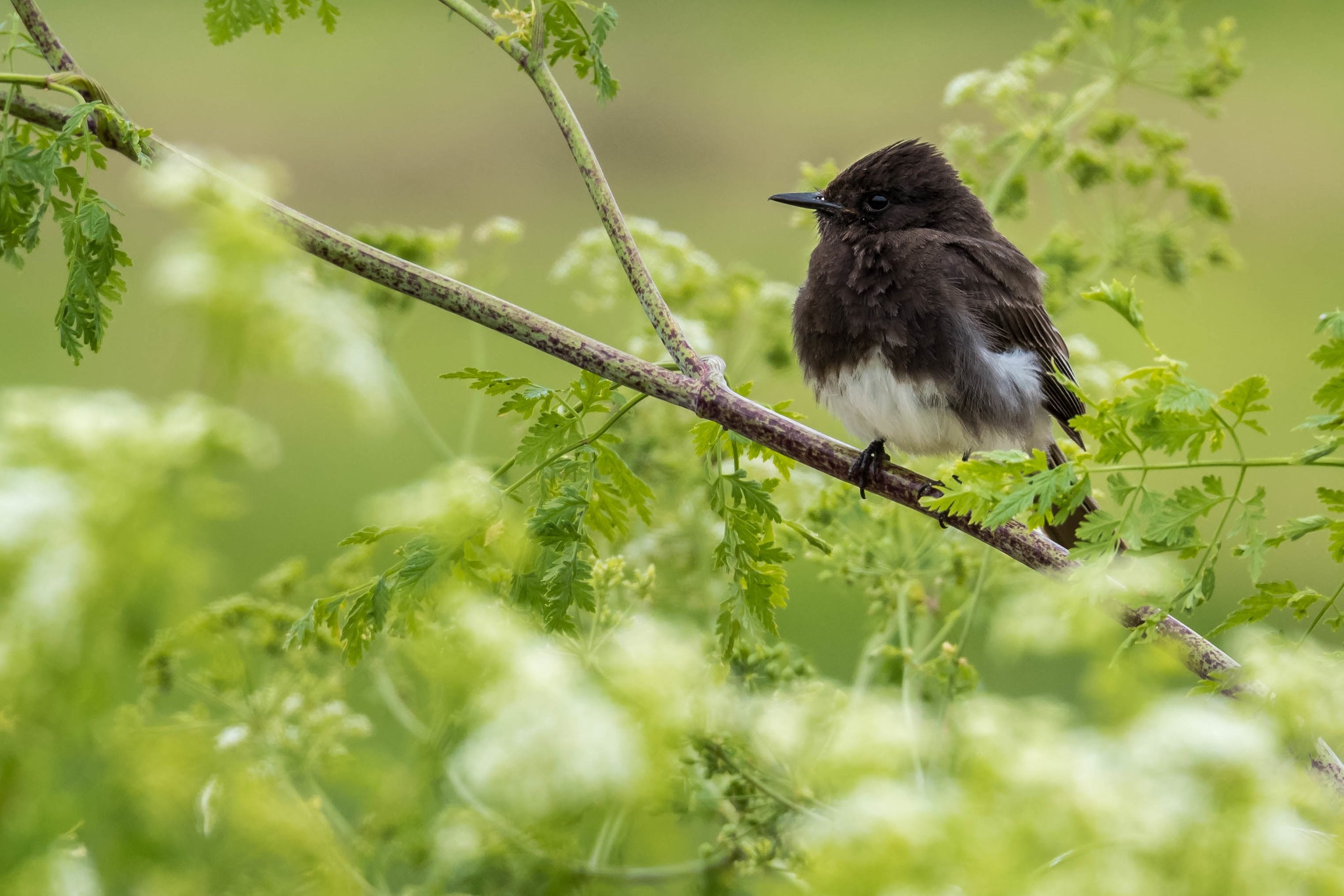
This was the first year I’ve seen (and heard!) Dark-eyed Juncos bouncing around on the patio, as well as plump Black Phoebes jostling for dropped seeds. Had they always been here? Had I somehow not heard the Junco trilling as it hopped around my asparagus fern? While both appear to have mostly moved on, their temporary presence altered how I think about even the smallest migrations.
I’m also used to seeing jaunty White-crowned Sparrows, but right now, I have a cluster of noisy House Sparrows here too. Every time a pair dives down to land on the fire escape outside my living room window, I look up, elated to see them again. If I sit outside, quiet and unmoving for a while, they eventually scamper around my feet, closer than I have been to most humans this month.
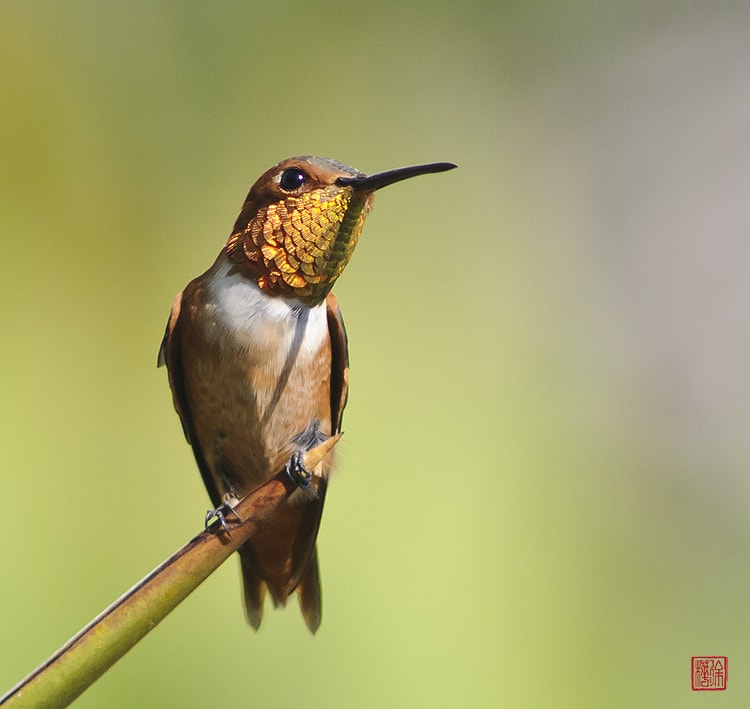
That’s the other thing about birds: their ideas about safe distances can be different than ours. I often hear their distinctive ticking when they approach to feed, but sometimes, I look up from reading and have to stifle a scream when a cinnamon-green Allen’s Hummingbird is hovering less than a foot from my face. With what feels like aggression—but maybe it is innocent curiosity—he’ll check me out before darting over to drink from a neglected, sun-scorched aloe plant, another castoff adopted from a now-former neighbor.
At least one nectar-feeder understands social distancing: a displaying male Anna’s Hummingbird, who ratchets up several stories from the front courtyard, only to plunge dramatically back down again.
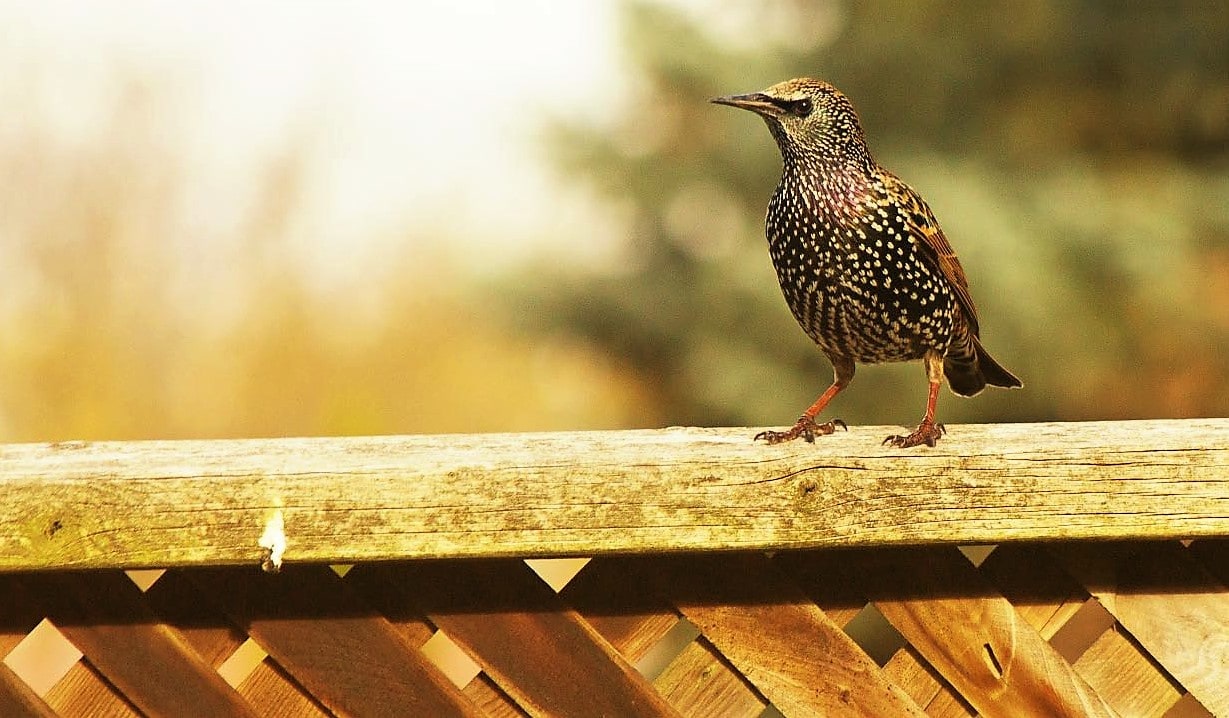
Early one recent evening, we were bundled up on the porch with drinks poured and books open when a European Starling settled on top of a neighboring building and announced itself with a series of warbles. Typical of our respective temperaments, Andreas stayed calmly seated while I excitedly darted inside for binoculars. A minute later, I was staring at the Starling’s iridescent green undercoat shining in the sunset’s reflection.
Intellectually, I understand that Starlings are numerous, and spotting one probably sounds commonplace. But I’d never seen or heard one in my area before! I was so unfamiliar with this incredibly common bird that I had to pull out my copy of Charles Hood’s A Californian’s Guide to the Birds Among Us to make sure I was correctly identifying my visitor.
Eventually, I looked up again, and it had flown away. Of course it had; life is constant change and movement, even when we are temporarily grounded. But by the time that Starling had decided on its next move, I too had already shifted my attention to the next spot on the horizon.
Britta Shoot is a journalist and writer in San Francisco.
We want to feature your stories about birding during this crisis. Do you have a shelter-in-place birding story you’d like to share with us? Contact GGBA’s Communications Manager, Melissa, at mramos@goldengatebirdalliance.org with 800-1200 word testimonials. Wishing you joy and peace through birding.
